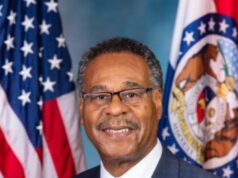COLLEGE STATION, TX – High-risk home mortgages are facing national scrutiny thanks to the recent rise in subprime foreclosures, but a noted research economist with the Real Estate Center at Texas A&M University is coming to their defense.
“There is no reason to overreact and kill something that has served, and could continue to serve, a useful purpose,” said Dr. James Gaines, research economist with the Center.
For several decades, housing advocacy groups and government agencies at all levels had been calling on the private sector to be more active in fostering homeownership by, among other things, making mortgage credit available to lower-income, higher-risk buyers.
Many state, local and federal housing programs were created to increase homeownership, but most never reached the number of potential homeowners that the subprime market reached.
“The private sector found a way to make loans to low-credit, previously unfinanceable households so that they could own homes,” Gaines said. “While this effort was spurred by profit, not altruism, the effect on homeownership throughout the country was nevertheless profound.”
In fact, substantially reduced mortgage interest rates and relaxed lending standards caused U.S. homeownership to increase from 64 percent in 1995 to more than 69 percent in 2006, an unprecedented jump.
Since 1998, subprime loans have increased from less than 2 percent to more than 14 percent of the total market, and they are estimated to make up 25 percent or more of all mortgage loans originated since 2003.
The current national foreclosure rate on subprime mortgages is around 4.5 percent, which will probably increase during the next year.
Rather than do away with a mortgage vehicle that has put many low-income people in homes, Gaines recommends cracking down on residential lending practices that have gone from being merely aggressive to being predatory and illegal.
For example, some loan originators steer borrowers into loans that are more expensive and carry a higher risk than necessary, or provide preclosing “good faith” cost estimates that are so complicated that borrowers cannot understand them. Borrowers are sometimes told not to worry about individual costs and fees because they will be rolled into the loan.
“The fraud, predatory lending practices, purposeful misrepresentations and other illegal practices used by unscrupulous lenders must be stopped,” Gaines said.
However, he said this may not be easy because many of the practices are hard to clearly categorize as proper or improper, much less legal versus illegal.
“It is imperative that the residential mortgage market operate efficiently and with clear, defined limits,” he said. “The penalty for exceeding or disregarding the limits should be severe.”
Given time, and with better-informed homebuyers, Gaines says illegal practices should cease, opening the door for sound subprime lending practices to expand homeownership to millions of people in the future.
“We need to retain this type of loan to foster homeownership, especially among working-class households,” he said.
For more information on the value of subprime loans, read “The Value of Subprimes” in the July 2007 issue of Tierra Grande.
The Real Estate Center has been providing solutions through research for 35 years. Funded primarily by Texas real estate licensee fees, the Center was created by the state legislature to meet the needs of many audiences, including the real estate industry, instructors, researchers and the general public.
By Bryan Pope, Associate Editor, Real Estate Center at Texas A&M University















